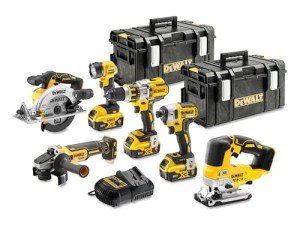
Power Tool Sets UK
FollowOverview
-
Sectors Automotive Jobs
-
Posted Jobs 0
Company Description
What’s The Current Job Market For Build Your Own Tool Kit Professionals?
Build Your Own Tool Kit: A Comprehensive Guide
Building your own tool kit is a vital venture for any DIY lover, property owner, or hobbyist. Having an efficient and detailed tool kit not only enables you to take on various jobs effectively but also conserves you money and time in the long run. This guide will check out how to Build Your Own Tool Kit; avcorrealty.Com,, what tools to consist of, and answer some regularly asked concerns.
Why Build Your Own Tool Kit?
Creating your own tool kit supplies a number of benefits:

- Personalization: You can tailor your toolkit to satisfy your particular needs and tasks.
- Quality assurance: You can select the tools based on personal choice for quality and durability.
- Cost Effectiveness: You can avoid purchasing unnecessary tools and focus on what you need.
- Learning Experience: Building your own toolkit is an educational experience that enhances your understanding of your tools.
Vital Tools for Your Tool Kit
Creating a tool kit can appear complicated, particularly with the range of tools readily available. Below is a categorized list of essential tools, from hand tools to Power Tool Combo Set tools, to assist you get begun:
| Category | Tools | Purpose |
|---|---|---|
| Hand Tools | Screwdrivers (different sizes) | Tightening and loosening up screws |
| Hammers (claw and rubber) | Driving and eliminating nails | |
| Pliers (needle-nose, slip-joint) | Gripping, twisting, and cutting | |
| Wrenches (adjustable and socket) | Tightening or loosening up bolts | |
| Tape Measure | Measuring length | |
| Cutting Tools | Energy Knife | Cutting different products |
| Handsaw | Cutting wood | |
| Cheap Power Tool Kits Tools | Cordless Power Tool Kits Drill | Drilling holes and driving screws |
| Circular Saw | Cutting big sheets of product | |
| Fasteners | Nails, Screws, and Anchors | Protecting products |
| Wood Glue | Bonding wood pieces together | |
| Security Gear | Shatterproof glass | Securing eyes |
| Work Gloves | Securing hands | |
| Ear Protection | Reducing sound direct exposure | |
| Organizational | Tool Box or Bag | Keeping tools arranged |
| Identifying Supplies | Easy recognition of tools |
Developing Your Tool Kit: Step-by-Step
-
Determine Your Needs: Determine what projects you prepare to undertake. Various projects require different tools. For example, if you’re mainly working with wood, focus on wood-cutting tools.
-
Budget Planning: Decide just how much you are willing to invest in your tools. Purchasing quality tools is essential, as they can last a lifetime.
-
Purchase Tools Gradually: Start with the most important tools and slowly add more specific tools as needed.
-
Organization: Invest in a tough tool kit or organizer. Keep often utilized tools easily accessible while keeping others safely.
-
Maintenance: Regularly clean and preserve your tools to extend their life expectancy and guarantee they perform well.
Advantages of Different Tool Types
| Tool Type | Advantages | Downsides |
|---|---|---|
| Hand Tools | No requirement for electricity, portable, exact | Can be labor-intensive |
| Power Tool Set Tools | Save time and effort, boost precision | Requires electricity, much heavier |
| Cutting Tools | Versatile and efficient for numerous products | Needs proper handling and maintenance |
FREQUENTLY ASKED QUESTION: Building Your Own Tool Kit
1. What is the minimum variety of tools I need to start with?
A fundamental toolkit can start with just 5-10 essential hand tools (e.g., a hammer, screwdrivers, pliers, a tape procedure, and an energy knife) depending upon your needs.
2. How do I choose the right tools?
Think about the kinds of jobs you will undertake. Research the tools used for those tasks and evaluate the quality and brand reliability.
3. Should I purchase brand-new or used tools?
Both alternatives have benefit. New tools often come with warranties, while utilized tools can be more economical. Make sure used tools remain in good condition and functioning well.
4. How should I maintain my tools?
Keep them tidy, save them properly, and check frequently for any required repair work or replacements. Oiling and sharpening cutting tools will also improve their performance.
5. Can I create a tool kit on a budget?
Yes! Look for economical tools, shop throughout sales, or think about second-hand options. Prioritize the most required tools first.
Final Thoughts
Building your own tool kit is not just a useful investment however likewise a rewarding experience that enhances your skills. It enables people to handle tasks with self-confidence and proficiency. By thoroughly selecting a mix of hand tools, powered tools, cutting tools, safety equipment, and organizational supplies, anyone can develop a tailored tool kit that fulfills their distinct needs.
With a well-rounded tool kit in hand, people can open their imagination and see their ideas come to life, project by task. Delighted building!
